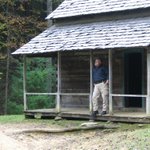Memorial Day: North and South
On Memorial Day, most folks look forward to a day off from work, and maybe some steaks and burgers on the grill with friends and family. Oh, and a few adult libations. And yes, from time to time they remember fleetingly, acknowledging all those Americans who gave their all to America. But there's a couple of interesting things about Memorial Day that most folks don't know about.
Memorial Day began as a Confederate holiday in 1866, the year following the end of the War of Northern Aggression, which was then called Decoration Day. Wesley Pruden describes it in this way.
The ladies of Columbus, Georgia, went to the graveyard with broken hearts to decorate the graves of their husbands, sons and brothers who had died defending hearth and home from the depredations of old William Tecumseh Sherman on his infamous march from Atlanta to the sea.
The ladies of Columbus decorated the graves with flags and flowers in remembrance of what love and sacrifice had wrought. They decorated the few Union graves among their dead with flowers, too. “They were cruel,” said one of the ladies of the Yankee invaders, “only to be true to their cause.” This simple act of generosity was quickly noted by several important newspapers in the North.
“The action of the ladies on this occasion,” said the Daily National Intelligencer in the nation’s capital, “in burying whatever animosities or ill feeling may have been engendered in the late war towards those who fought against them, is worthy of all praise and condemnation.” The Cleveland Daily Leader agreed: “The act was as beautiful as it was unselfish, and it will be appreciated in the North.”
And so Decoration Day became a day of remembrance and reconciliation across the land, later to be called Memorial Day, and still, particularly in the small towns of the South, a day of decorating graves of Confederate soldiers of the War Between the States with flowers and flags.
Memorial Day embraces the sacrifice of all Americans, and Confederates as well, and those brave men would not understand or condone the tearing down of statutes that memorialize those sacrifices, nor of the petty act of breaking out the tiny images of Stonewall Jackson and Robert E. Lee from the stained glass windows in the Episcopal Washington National Cathedral in Washington DC. Despicable.
And with that decision, the National Rifle Association was born. Today, the NRA encourages shooting sports, promotes and defends the Second Amendment, advocates for political activism, and teaches gun safety, pre-licensing education for states' concealed carry permits, and gunsmithing. The NRA enjoys huge popular support, especially as the left continues to seek the abolition of the Second Amendment and the universal cconfiscation of all guns In fact, over six million Americans are dues paying members of the organization, many for precisely this reason.
Molon Labe.

No comments:
Post a Comment